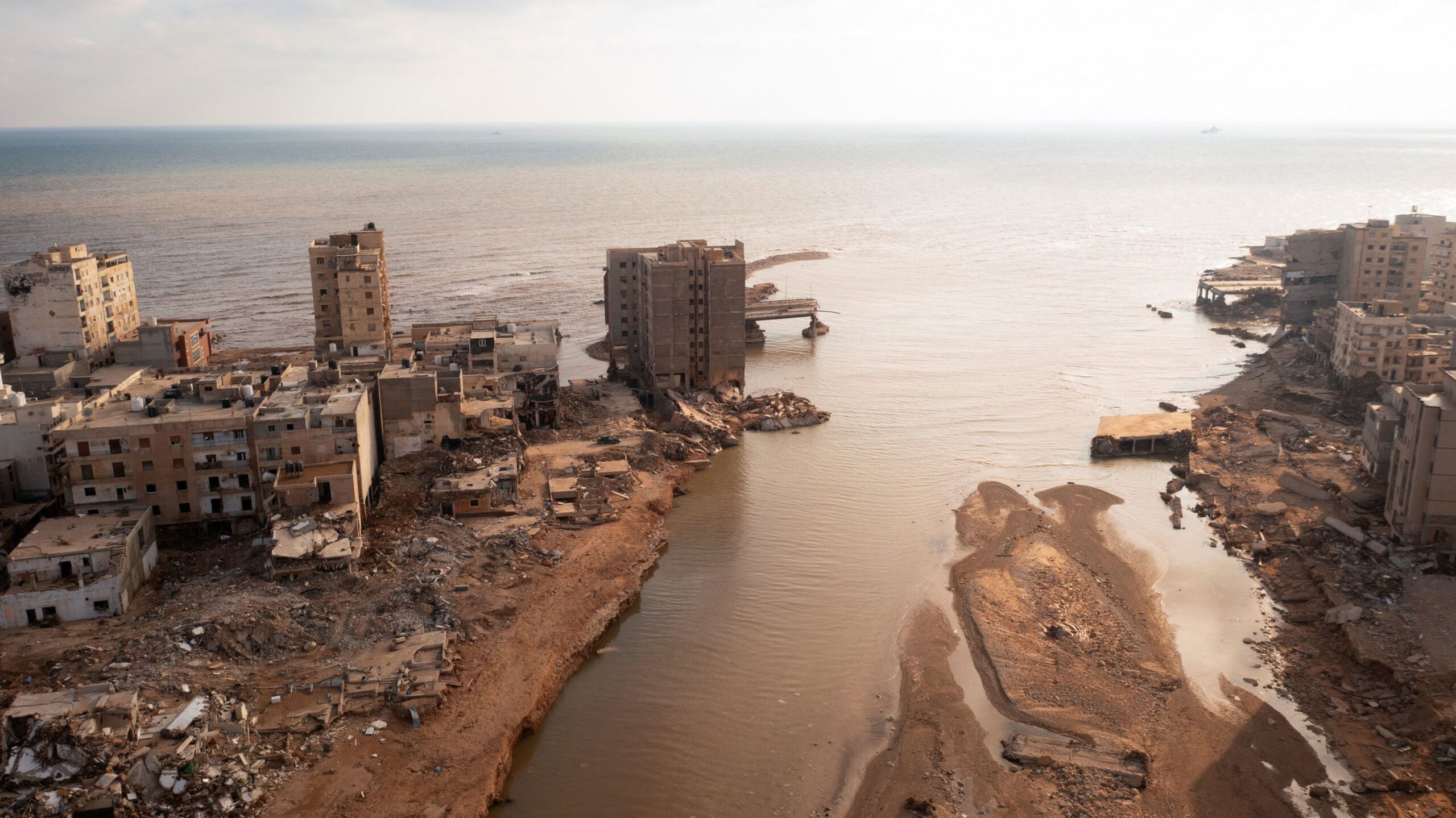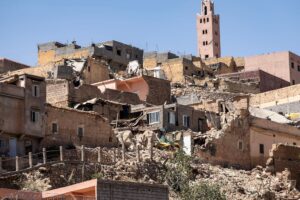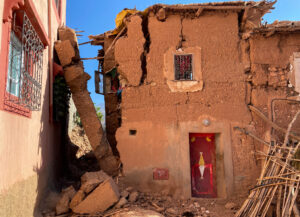
Flood in Libya
Heavy rains, caused by Storm Daniel, swept through Libya’s northeastern region on Sunday, 10 September, causing flash floods, the collapse of two dams near Derna and overflowing rivers in five provinces (Benghazi, Al Marj, Al Jabal Al Akhdhar, Derna, and Tobruq). According to the DTM update, more than 5,000 people are presumed dead, including 3,922 deaths registered in hospitals, and more than 9,000 people were still missing four days after the disaster. Around 38,000 people have been displaced.
The United Nations Office for the Coordination of Humanitarian Affairs (OCHA), in collaboration with humanitarian partners and in support of the national government, launched a Libya Response Flash Appeal for a three month period.

The minaret of a mosque stands behind damaged or destroyed houses following an earthquake in Moulay Brahim, Al-Haouz province, on September 9, 2023. Morocco’s deadliest earthquake in decades has killed at least 1000 people, officials said on September 9, causing widespread damage and sending terrified residents and tourists scrambling to safety in the middle of the night. (Photo by FADEL SENNA / AFP) (Photo by FADEL SENNA/AFP via Getty Images)
More than 880,000 people in the five hardest-hit provinces, including 440,000 women, were affected by the disaster with more than 40,000 displaced people. The cities of Derna, Battah, Soussa, Al Marj, Taknis, Al Bayda, Shahat, Al Bayadah, Tolmeita, Tokra, Al Abyar and Bersis are among the worst affected and schools and hotels are being used for shelter. Telecommunications and electricity outages combined with road collapses are making access to information extremely challenging.
Both the Foreign Affairs Committee of the Libyan House of Representatives and the Presidential Council have requested international assistance.

A view shows a house, damaged in an earthquake, that belongs to Saida Bodchich and her husband Abdellatif Ait Bella, who was injured in the earthquake, in the village of Tansghart in the Asni area, following a powerful earthquake in Morocco, September 9, 2023. REUTERS/Abdelhak Balhaki
UNFPA estimates that up to 230,000 of the people in need of humanitarian assistance are women and girls of reproductive age (15 to 49 years) among whom an estimated 24,000 women are pregnant and in need of essential sexual and reproductive health (SRH) services, including basic and comprehensive emergency obstetric and neonatal care (B/CEmONC). Around 2,625 pregnant women among the people in need of humanitarian assistance are expected to give birth in the next month.
SOSF is preparing humanitarian aid for the 5 provinces in Libya and is beginning to model the best way for recovery of these regions, using its AI algorithm.





